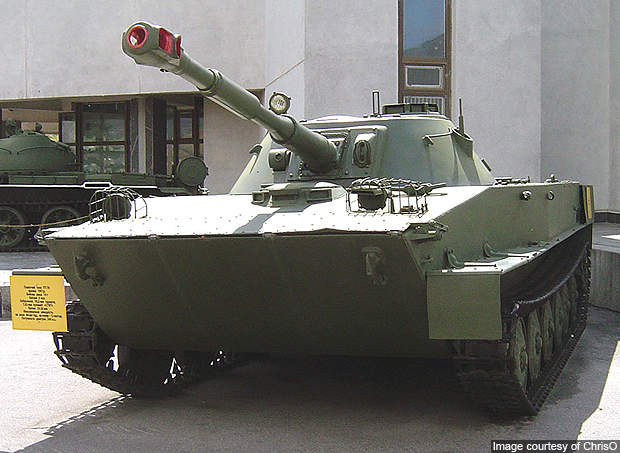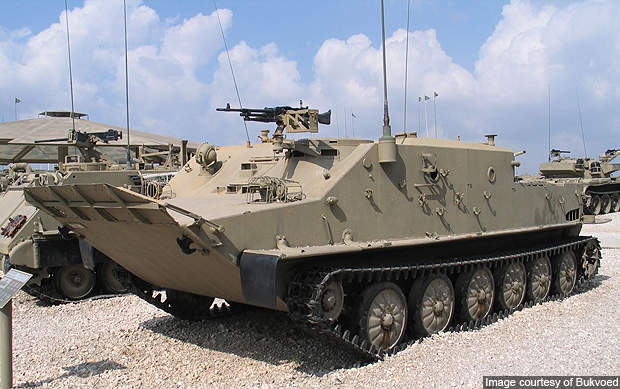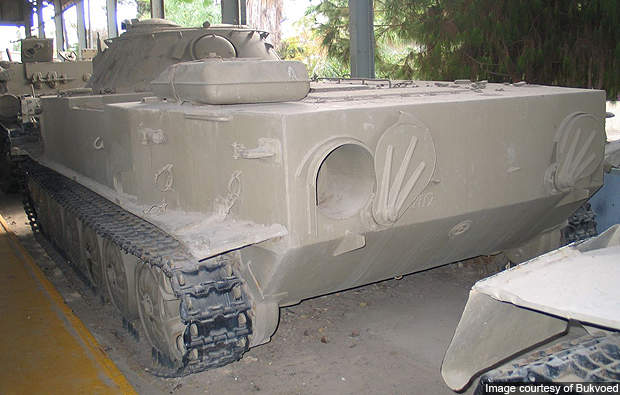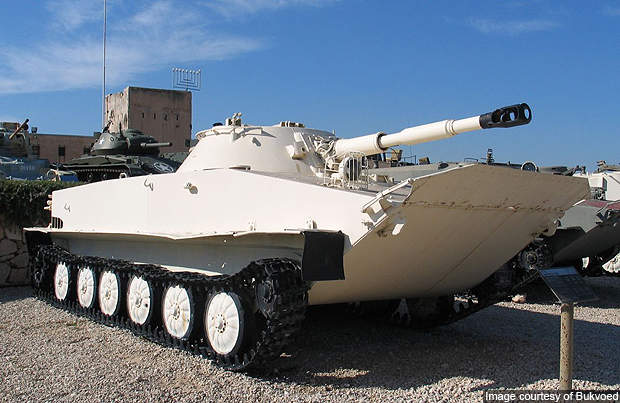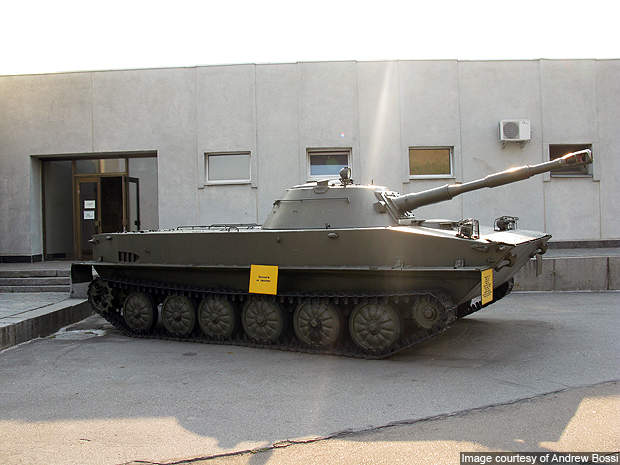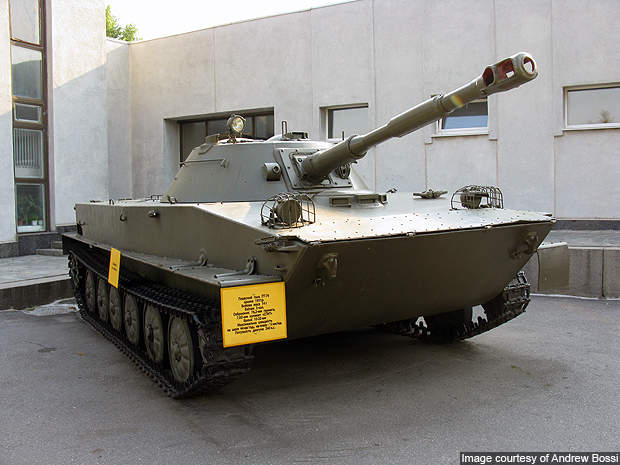The PT-76 light amphibious tank.
The Russian Plavayushchiy Tank or PT-76 is a light, amphibious tank developed in the early 1950s. It is operated by a crew of three personnel. About 12,000 of these floating tanks were produced for domestic and export markets from 1958-1967. About 2,000 vehicles were exported to various countries including Vietnam, Indonesia, North Korea, India, Hungary, Egypt, Afghanistan, Cuba, China and Russia.
It is still in active service for fire-support, reconnaissance and troop transport operations with about 25 countries across the world. The light tank is still in service with several naval infantry units across the world for its excellent manoeuvrability at varying depths of water. China developed the Type 63 amphibious light tank based on the design of PT-76.
PT-76 tank design
The tank has a welded steel hull with three compartments. The driver sits in the front compartment and has a single-piece hatch cover. The tank has an all-welded steel turret with seating for the commander on the left and loader on the right. The tank has 15mm thick armour made up of homogeneous, cold rolled, welded steel. An oval shaped hatch cover is fitted to the turret with a vertical lock. A circular cupola on the double hatch allows for the use of observation devices. An emergency hatch is also provided under the driver’s seat for crew exit.
A trim vane at the front provides stability during in-water operations and acts as additional armour when not in use. It protects the crew and ammunition against small artillery shell fragments and 7.63mm arms fire.
Development and upgrades
The tank was developed for the Russian Army to meet their requirement of an amphibious light reconnaissance tank after the World War II. It was developed along with an armoured personnel carrier (APC), BTR-50P, and they share common automotive and suspension systems. The first prototype was developed in 1950 and after further trials and improvements it entered into service in 1952. The variant PT-76B was the final production model of the tank built at the Volgograd Tractor Plant.
It underwent several upgrades in service such as addition of a gun stabiliser, a TDA smoke generator system, FVU and PAZ systems and an R-113 VHF radio. The upgraded tank features a 90mm defence gun from CMI of Belgium and a new diesel power pack developed by Nimda of Israel.
The state intermediary agency JSC Rosoboronexport of Russia also provided an upgrade package for the chassis and turret of the tank. The new turret is equipped with an AU-220M, a two-person 57mm rapid fire weapon system. The automatic 57mm cannon is fully stabilised and has a muzzle brake to reduce its recoil force on the chassis.
Armament
The main armament of the amphibious tank is a 76.2mm D-56TM (2A16) 42 calibre stabilised gun. It has a fire rate of eight rounds per minute and an effective range of about 1,500m. The main gun is mounted on the circular truncated cone turret.
The main gun ammunition includes 8 x BK-350M high explosive anti tank (HEAT) rounds, 24 x OF-350 Frag-HE rounds, 4 x armour-piercing tracers (AP-T) and 4 x subcalibre AP-Ts and BM-354P HVAPs. They can penetrate lightly armoured vehicles and armoured personnel carriers at 1,000m. The gun is fitted with a double-baffle muzzle brake and a bore evacuator at the turret’s rear. It can be elevated and depressed between -4° to +30°.
The PT-76 also has a coaxial 7.62mm SGMT machine gun with 1,000 rounds. It is mounted at the right of the main gun and has an effective range of 1,000m.
Observation
The driver’s hatch cover is fitted with three integral TNP day periscopes, which can be rotated through 360°.
The middle periscope can be replaced by a PER-17A day periscope to allow the drivers vision in water. A TVN-2B infra-red periscope with a 60m range can be fitted at the centre.
The commander has a 4X optical sight, a TShK-66 sight/rangefinder, a TPKU-2B observation device and the two periscopes.
A GPK-48 gyrocompass is provided for the driver, while an MK-4 observation device is mounted on the turret roof for the loader.
Mobility
The tank has hollow rubber-tired wheels for buoyancy and a torsion bar suspension system. The first and last wheels are equipped with hydraulic shock absorbers. It is powered by a 4-stroke, in line water-cooled, V6, 6-cylinder diesel engine. It generates 240hp at 1,800rpm and a road speed of 44km/h. It has a range of about 400km and the rear features space for external fuel tanks increasing the range to about 510km.
The boat shaped hull allows it to traverse in water. Two electric bilge pumps, the trim vane, a manual bilge pump and two hydrojets are built-in for amphibious propulsion. It can manoeuvre at speeds of 10.2km/h with a range of 100km.

